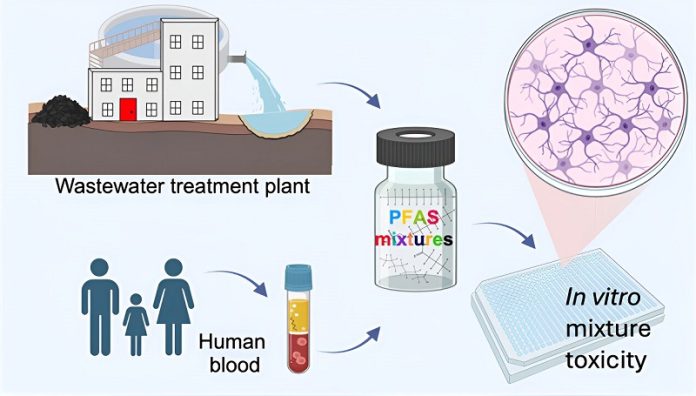
A groundbreaking study has found that “forever chemicals,” known as PFAS (per- and polyfluoroalkyl substances), become much more toxic when mixed together in the environment and the human body.
These synthetic chemicals are widely used in everyday products like nonstick pans, makeup, and firefighting foam, and they don’t easily break down, meaning they stay in the environment for hundreds or even thousands of years.
The research, published in Environmental Science and Technology, is the first to measure how toxic PFAS are when they mix together, rather than testing each chemical individually.
The study found that while the toxicity of individual PFAS is usually low, combining them makes the entire mixture much more harmful.
“Not all PFAS are equally dangerous. Some are more toxic than others,” says Karla Ríos-Bonilla, a Ph.D. student at the University at Buffalo and the study’s lead author. “But when these chemicals mix, they all contribute to the toxicity.”
The study, conducted by a team of researchers from the U.S. and Germany, tested PFAS in laboratory experiments to see how these mixtures affected cells.
They found that even though most PFAS aren’t very toxic on their own, the combined effects were much worse.
PFAS are a significant concern because they can be found in about 45% of the drinking water in the U.S. and in the blood of nearly all Americans. These chemicals have been linked to serious health problems, including cancer and developmental disorders.
Earlier this year, the U.S. Environmental Protection Agency (EPA) introduced new standards for six types of PFAS in drinking water. However, there are over 15,000 different PFAS in the environment, and only a few have been studied or regulated.
The researchers wanted to find out how PFAS mixtures act in the environment and in the body. They created their own PFAS mixtures based on data from U.S. government sources, representing what is typically found in blood and water. They tested the effects of these mixtures on cells to measure their toxicity.
Two chemicals, PFOA and PFOS, stood out as major contributors to the toxicity. PFOA, often used in nonstick pans, made up 42% of the toxic effects in water samples, while both PFOA and PFOS were big contributors to the toxic effects seen in cells.
Interestingly, the researchers also tested real samples from a wastewater treatment plant and found very high toxicity, even though the PFAS concentrations were low. This suggests that there are many other chemicals in these samples that add to the toxicity but haven’t been identified yet.
The study also looked at whether PFAS act together in a “synergistic” way, where their combined effect is worse than the sum of their individual effects. However, they found that the toxicity of PFAS mixtures is “additive,” meaning the overall harm is simply the sum of the toxicities of each chemical.
The findings are important for future regulations and could help make cleanup efforts more effective. Understanding how these chemicals behave in mixtures will help scientists assess the risks and develop better ways to protect the environment and public health.
Source: University at Buffalo.



